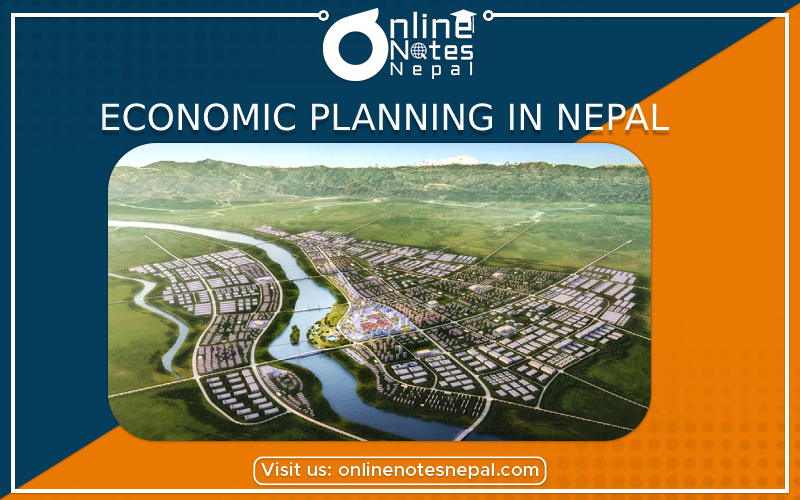Economic Planning in Nepal
Economic plan refers to the development plan which targets to promote economic advancement.Nepal is a developing country in the world. It has a lot of problems for the rapid development in present context. Economic planning was started in 1930s’ decade from former U.S.S.R so that their economy was not highly affected by the great depression of that decade. In Nepal, 2013 B.S first five-year plan was formulated and implemented. Poverty alleviation is the main objective of economic plans of Nepal since 7th plan.There are various ways that a nation can organize its economy. The basic layout of economic planning include:
Income
- Borrow from international banks such as World Bank and Asian Development Bank. Debt and interest much be paid.
- Tax citizen of the country, using income-tax (part of people's earning) VAT (extra money paid when buying things or services), property tax(people with land and houses pay).
- Trade, industry, and investment, brings money from overseas, e.g. a multinational company could build a factory, goods can be exported, customs can be charged.
- Aid can be asked from other countries, but its used may be controlled by the donor country.
Expenditure
- Repaying debts and interests
- Spending on health, education, roads, social services, information, improving agriculture
- Investing by starting or encouraging new industries, tourism, etc
- Save money in a bank.
- Economic planning is a planning on how to earn money and spend it in a best possible way.
- Economic planning is essential for an organized development of a country. Without such a planning country does not have clear goals and methods to work towards development.
Advantages of economic planning
- Means and resources are utilized to their maximum.
- Social justice and regional balance can be maintained.
- Unlimited demands can be fulfilled in the priority basis.
- Expected goods can be achieved in a short time.
- Planning gives a specific direction to our economic growth.
- It is easier to maintain harmony between population and environment.
- Public participation can be encouraged and employment can be generated.
- Development projects are more successful and sustainable.
Periodic plans
The government of less developed country has the responsibility of planning and controlling the economic development of the country. One way of doing this is a 5-year plan. The National Planning Commission is responsible for these. They must set their aims, what it is hoped to achieve in the following 5 years, and they must decide how the aims can be achieved. The tenth plan completed in 2007 AD. Then, was running the 3-year Interim Plan.
Participatory economic planning
If you are very poor, it is very difficult to start being productive, because tools and raw materials need to be bought. Also, working alone, there is not enough labor. Traditionally, Nepali people have formed small groups to help each other, and now all over the developing world small groups of 5-25 people are joining together and borrowing micro-credit. The actual details were varying from place to place but the basic method is similar.
The economic planning implemented so for are given below :
- First plan(2013-2018 B.S.) {Note:Planless year-2018-2019}
- Second plan (2019-2022)-Three year plan.
- Third plan (2022-2027 B.S)
- Fourth plan(2027-2032 B.S)
- Fifth plan(2032-2037 B.S)
- Sixth plan(2037-2042 B.S)
- Seventh plan (2042-2047 B.S) (Planless year-2047-2049 B.S)
- Eighth plan (2049-2054 B.S)
- Ninth plan (2054-2059 B.S)
- Tenth plan-(2059-2064 B.S)
- Eleventh plan(2064/065-2066/067 B.S)Three year
- Twelfth plan(2067/068-2069/070 B.S.)Three year
- Thirteenth plan(207/071-2072/073 B.S.) Three year
Thirteenth Planning(2070/071-2072/073 (Long term vision)
To upgrade Nepal from a least developed to a developing country by 2022 A.D
Objective
To let people directly positive change in the living standard by reducing the existing economic and human poverty prevalent in our country.
Strategies
- Develop physical infrastructure
- The increment of access uses and quality in social services
- Promotion of good governance in public and other sectors
- Conduction of development activities favourable to climate change
- Enhances access to social services and improve the use quality of those services.
Programs obtained
- Development physical infrastructure
- Promoting good governance
- Developing roads and other physical infrastructure
- Developing tourism ,industrial and trade sectors and
- Protecting natural resources and the environment
- Developing of hydropower and other energies
- Developing basic education,heath,drinking water and sanitation sectors
